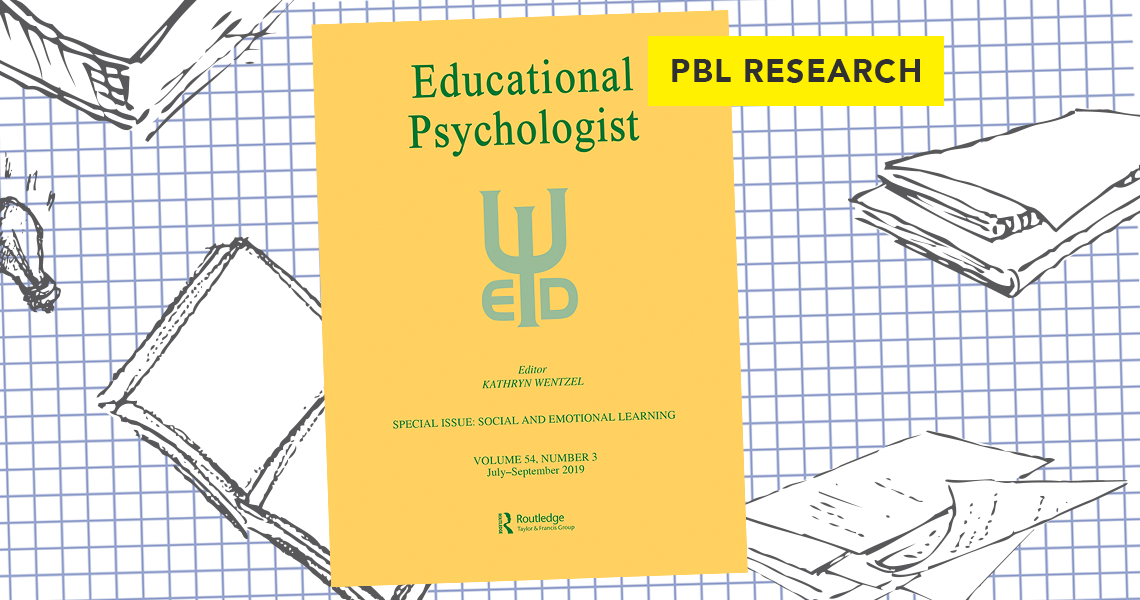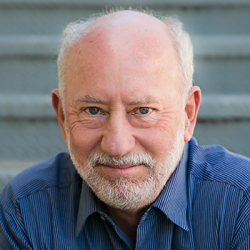
Social-emotional learning (SEL) can promote “equity and excellence” – and PBL is one of the best ways to teach it.
That’s the encouraging claim in a recent paper in the journal Educational Psychologist: "Transformative Social and Emotional Learning (SEL): Toward SEL in Service of Educational Equity and Excellence" (Robert J. Jagers, Deborah Rivas-Drake & Brittney Williams, July 2019).
This paper has some well-researched findings that are worth touting, since we too have been arguing that PBL is a powerful strategy for addressing educational inequity, one that can even be transformative for many students. We’ve known for some time that SEL and PBL go together very well.
To review the basics, here are the 10 indicators of high-quality schoolwide SEL, according to the leading organization promoting it, the Collaborative for Academic, Social, and Emotional Learning (CASEL):
1. Explicit SEL instruction
2. SEL integrated with instruction
3. Supportive classroom and school climates
4. Youth voice and engagement
5. Focus on adult SEL and relationships
6. Supportive discipline
7. A continuum of integrated supports
8. Systems for continuous improvement (and evaluation)
9. Family partnerships
10. Community partnerships
I’d encourage you to read the whole paper, but if you’re not so inclined or don’t have the time right now, here are some key quotes.
This first one explains their overall goals, and the concept of “transformative SEL”:
This article builds on our recent efforts to help advance the research agenda for the next generation by focusing on SEL in the service of equity and excellence. Scholars and practitioners have raised important questions about whether guiding frameworks, prominent programs, and associated assessments adequately reflect, cultivate, and leverage cultural assets and promote the optimal well- being of young people, especially those from communities of color and underresourced backgrounds…
The concept of transformative SEL is a means to better articulate the potential of SEL to mitigate the educational, social, and economic inequities that derive from the interrelated legacies of racialized cultural oppression in the United States and globally. Transformative SEL represents an as-yet underutilized approach that SEL researchers and practitioners can use if they seek to effectively address issues such as power, privilege, prejudice, discrimination, social justice, empowerment, and self-determination. In essence, we argue that for SEL to adequately serve those from underserved communities—and promote the optimal developmental outcomes for all children, youth, and adults—it must cultivate in them the knowledge, attitudes, and skills required for critical examination and collaborative action to address root causes of inequities.
The authors distinguish between the goals of three forms of SEL:
• Personally Responsibility: Shows “good character” by displaying prosocial attitudes and behaviors; being helpful in their local community in a general sense.
Examples of programs and approaches: skill development (risk prevention and competence promotion)
• Participatory Citizen: Actively involved in civic life through local clubs, organizations, social institutions, and political activities.
Examples of programs and approaches: classroom community building; multicultural education; service learning.
• Transformative/Justice Oriented: Concerned with institutional and system change efforts and consistent with critical democracy.
Examples of programs and approaches: culturally relevant education; project-based learning; youth participatory action research (YPAR)
The authors go on to describe PBLWorks/Buck Institute for Education’s model for Gold Standard PBL, highlight the value of culturally relevant education, and offer this example of such a project:
For example, Dimick (2012) reported on the efforts of a high school environmental science teacher to make students aware of how the pollution of a local river was linked to larger regional and societal problems. After a field trip to the river, students were supported in developing their own action plans for addressing the condition of the local waterway. This included producing an informative rap song to raise community consciousness and then organizing a cleanup effort. Dimick found increased science engagement even among students who were previously disengaged during the science class.
I could quote many more pieces of this very important and reaffirming paper, but I’ll leave you with this:
(Student-centered) Instructional approaches such as PBL and YPAR appear to have potential for fostering social, emotional, and academic processes and outcomes for diverse students and adults. Our read of the literature, including the recent scholarship on the science of learning and development… suggests that such approaches are aimed at developing critically informed and engaged students and thus are consistent with transformative SEL.
Collaborative problem-solving represents a skill set that is in significant demand in the increasingly complex global community… studies have shown that Black students both prefer and demonstrate greater social and academic motivation and increased learning in cooperative/communal learning settings... We imagine that identity and belonging are implicated as well.
Student-centered/student-led approaches like PBL and YPAR are consistent with the core principles of culturally relevant education. However, they are more intentional about positioning students as experts on their own lived experience and capable of working with peers and adults to leverage academic content and skills to devise and iteratively test ways to advance collective well-being.
You can find the whole paper here.

